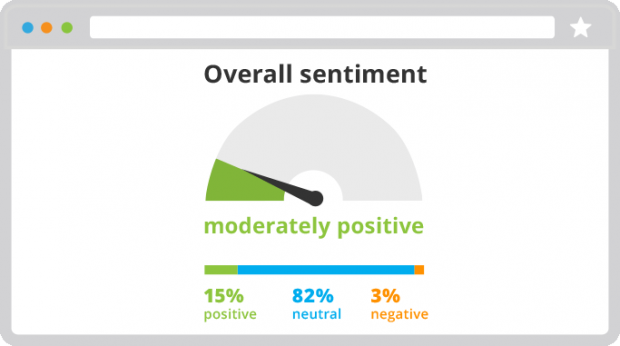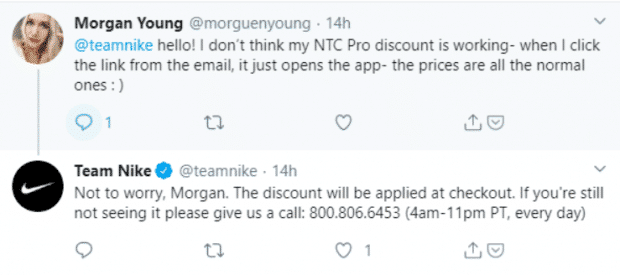Social media listening provides brands a chance to track, analyze, and respond to conversations about them on social media. It’s an important component of viewers’ research.
Think about your own coffee shop. One day while you’re making a latte behind the counter, you overhear two clients in line talk about your meal choice.
“I like the pastries here,” one says. “Especially the croissants.”
“Yeah, the croissants are nice,” the other one replies. “However I’m not too crazy about cookies. Approach too dry.”
You start to marvel. Hmm. Does everybody feel this way concerning the cookies?
So you begin to ask around. You hear different opinions about your coffee shop. You begin to listen. Based on what you hear you begin to make changes that individuals like.
And it really works. Your clients are lining out the door to get a hold of your new cookies. That’s since you just employed a tried-and-true technique for brands to interact with their clients and provides them what they love:
Social listening
In case you’re not utilizing social listening, you’re leaving numerous nice insights on the table.
Here’s how you can get began—and the tools to make it easy.
Social listening definition
Social listening is while you monitor your social media platforms for mentions and conversations associated with your brand. Then you definitely analyze them for insights to find alternatives to act.
It’s a two-step process:
- Step 1: Monitor social media channels for mentions of your brand, competitors, merchandise, and keywords associated with your business.
- Step 2: Analyze the information for methods to put what you learn into action. That can be something as small as responding to a cheerful customer, or something as huge as shifting your whole brand positioning.
At first glance, social listening might appear to be social media monitoring—however, the two concepts really differ in essential methods.
Social media monitoring is solely taking a look at metrics such as:
- Brand mentions
- Related hashtags
- Competitor mentions
- Industry trends
…and accumulating data about these metrics. Social media monitoring is nice for things like monitoring ROI or A/B testing campaigns.
Once you take action in response to the data you collected, you start the method of social listening.
Where social media monitoring seems to be at metrics like engagement rate and a variety of mentions, social listening looks beyond the numbers to consider the mood behind the data.
This helps you understand how folks feel about you and your competitors. It’s not simply counting the variety of occasions your brand will get mentioned.
This “online mood” is also known as social media sentiment. Keeping tabs on social media sentiment is a key part of social media listening.
Understanding how folks feel about your brand helps you retain your marketing and product improvement efforts on track. It additionally permits you to respond right away to positive or negative posts.
The main thing to understand is that social listening seems to be forward and backward. It’s about analyzing the information you collect and utilizing it to guide your technique and day-to-day actions.
Why social listening matters
In case you don’t use social media listening, you’re leaving numerous useful insights on the table.
Actually, you may be lacking out on an enormous piece of insight about your brand that individuals are actively discussing. You need to know what persons are saying about you.
Your prospects are telling you what they need from your brand. In case you care about them, you want to check out the insights you might gain from social listening.
Here are a few methods of social listening can help you:
Engage with clients
Social listening provides you opportunities to interact together with your prospects about your brand.
For instance, a buyer might have tweeted about how much they liked your product, or they might have reached out to you on social media for a customer service request.
Nike does this very nicely. Actually, they have an entire Twitter account devoted to responding to buyer support issues.
It’s not all the time direct replies either. Generally, they spot development and address it right away.
Another nice instance comes from Coca-Cola. They continuously respond to followers who tweet about their product—and follow up with them in their DMs.
This creates goodwill with their followers and boosts engagement. Think about how your brand can do the identical.
Manage crises
Engagement is nice—however solely when it comes to positive social sentiment.
Social listening permits you to track that sentiment in real-time. That means you can see what posts are doing nicely to your brand, and which ones aren’t.
In case you’re getting numerous positive engagement, search for the reasons behind it. Your prospects share a ton of helpful information about what they like and what they don’t. These classes might help guide your technique throughout channels.
Social listening additionally helps you address PR disasters before they get out of hand. If sentiment is down, review the social feedback for lessons that would prevent an identical misstep in the future.
If sentiment is way down, search for the cause and make adjustments immediately, by pulling an issue post, or apologizing for an insensitive Tweet.
One nice instance of this comes from Nike. In 2019, they discovered their brand in the center of controversy when Duke basketball player Zion Williamson’s Nike shoe exploded in the middle of a game.
The game was on national television. So when it occurred, influencers and celebrities took to Twitter to voice their concern for the player—in addition, to throw some shade on Nike.
Nike’s social media team wasted no time jumping on the grenade. They took the time to respond to tweets from concerned prospects, and their PR team launched a statement the following day wishing Willamson nicely and promising to investigate the matter.
In addition, they reached out to Willamson himself and provided him an advertising deal.
The goodwill, commitment, and humility within the face of crisis allowed Nike to rise above the situation.
Track competitors
Social listening is more than understanding what folks say about you. You additionally need to know what they are saying about your competitors. This provides you essential insights into where you fit in the marketplace.
Additionally, you will learn what your competitors are up to in real-time. Are they launching new products? Creating new marketing campaigns? Taking a beating within the press?
Social listening permits you to discover out about these new opportunities and threats as they occur, so you possibly can plan and respond accordingly.
Find pain points
Monitoring conversations around the industry uncovers a TON of insight about what’s working and—more importantly—what’s not working to your buyer.
This info is a gold mine for your product and marketing team.
You’ll additionally find out about frustrations together with your present merchandise. Are you able to tweak your merchandise to assist deal with the considerations? Should you do, remember to inform folks about it with a focused advertising marketing campaign.
Discover new sales leads
It’s a reality universally acknowledged that clients like it once you solve their issues. It’s additionally a reality universally acknowledged that clients hate being sold to immediately with the white-hot passion of a dying star.
Social listening helps you develop relationships with potential clients in your industry who you can nurture into relationships for social selling.
Reach out, make a connection, and share useful info. It will assist establish your brand as the perfect resource when it comes time to make a purchase choice.
Identify influencers and advocates
Monitoring social conversation about your industry gives you a sense of who the essential influencers are. These are essential folks to connect with. Because the term implies, they’ll have an enormous effect on how their followers and followers feel about you—or your competitors.
Additionally, you will discover individuals who already love your model and are saying nice things about you on social media. These are natural brand advocates. Reach out to them and search for opportunities to collaborate.




